#nothing to do with voodoo/vudun/vudu
Explore tagged Tumblr posts
Text
I hate the term "voodoo doll" with a passion.
5 notes
·
View notes
Text
Mindful Consumption of Hazbin Hotel’s vodoo Content
There is no such thing as Voodoo; it is a silly lie invented by you whites to injure us. —William Seabrook, The Magic Island
(Article and Study Link Sources will be in the reblogs because Tumblr doesn’t let linked posts appear)
First of all, I’m not writing this as a Vodou practitioner. Or as a Creole POC. I’m simply an outsider making an effort to educate herself for mindful consumption of Hazbin Hotel content and avoid perpetuating misrepresentation of a religion.
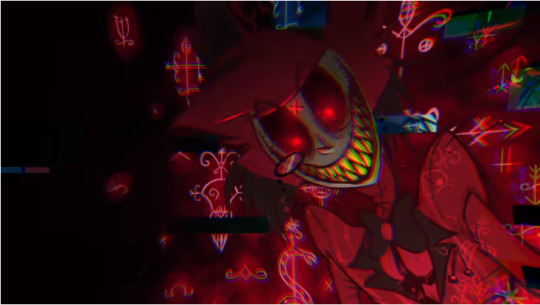
(Image: Alastor with Vodou symbols and Vodou-inspired symbols behind him)
The portrayed dark magic of Hazbin Hotel’s Alastor is heavily themed with Hollywood Voodoo or the misrepresentation of Vodou in film. This can also apply with Dr. Facilier in “The Princess and the Frog.” Both characters are from New Orleans [18], [19] where Louisiana Vodou Vaudou is practiced. Both are therefore assumed to practice an evil version of said religion.
During my consumption of Hazbin Hotel content, someone once pointed out the worrying factor of Alastor’s magic abilities identified as Hollywood Voodoo.
According to my research, Hollywood Voodoo is a film outlet of “Imagined Voodoo” or the age-old White anxieties on Black people.
What Is Vodou?

(Photo taken from Huffpost)
Haitian Vodou is a religion of African descendants brought as slaves to the French colony of Haiti. It combines west and west central African religions with Native American and European cultural and religious elements.[1]
It is also known as Vodoo, Vodoun, Vudu and Vudun. But to avoid confusion, the term “Vodou” will be used consistently throughout this post when referring to the religion.
Slaves from Haiti are brought to New Orleans where it infused with its dominant religion, Catholicism. The Vodou-Catholicism hybrid religion is sometimes referred to as New Orleans Vodou.[2]

(Photo provided by Cheryl Gerber)
All Vodou rituals are healing rituals. It's focused on the celebration of ancestral spirits (Lwa or Loa) through feasting, singing and ecstatic dance rituals to heal ailments and restore social bonds.[1]
Vodou practitioners believe of the visible world connected to the invisible world that can be transitioned to through Death. In the invisible world, the Lwa watch over and inspire us. The Lwa can be archetypes of human personalities such as Ogun the Warrior or predecessors. There is also the Bondye or their version of the supreme God who is loving but distant from individual human concerns. [3]
But despite this, a majority of foreigners synonimize “voodoo” with Haitian “black magic” or “sorcery.”[4]
What is Imagined Voodoo?
A Harvard study termed "Imagined Voodoo" to refer to the imagined religion and magical system of the American brain linked by the following White anxieties:
Black uprising
Black fetishization
Intermarriages that could lead to the dissolution of the White race
All under the guise of history or harmless entertainment, it negatively affects Black religiosity and in general, Black subjects. Unless we arm ourselves with information to prevent its perpetuation through us.
Alastor’s Themes and Voodoo Stereotypes
Stereotypes are often used in stories to save time on informing the audience through widely held and fixed oversimplified assumptions. The following Voodoo stereotypes are present in Alastor’s character traits and themes.
His Roots
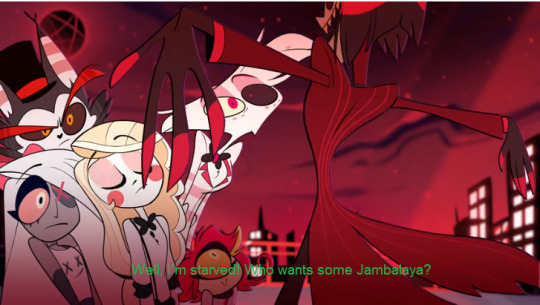
According to Alastor’s Wikia page, he is part Creole.[20] In New Orleans, the term can refer to many kinds of people. In early history, "Creole" is a term for:
A slave born in the New World[5]
A free Person of Color[5]
People of Mixed Heritage[5]
Later on, White French and Spanish people residing in New Orleans adopted the term to differentiate themselves from Americans whom they found greedy and ambitious.[5]
A Creole person can be White, a POC or of mixed race from different places such as Haiti and Louisiana.
The team behind Hazbin Hotel may have made Alastor part Creole in order to avoid religion appropriation. However, Vodou is not an exclusive religion. [6] (EDIT: Vodou is an exclusive religion.) And even if they want to represent mixed Creole people, pairing Alastor with Hollywood Voodoo may not be a good way to do it.
Vodou practitioners today are targets of hate crime, especially in Haiti (sacred mapou trees are regular targets of vandalism and arson, worshippers risk harassment and violence, with lynchings not unheard of).[7] If the media continues to portray Vodou as evil, it may have a role in perpetuating the hate.

(Image of a Vodou ceremony from a video of The Guardian)
Depicted As Evil Magic
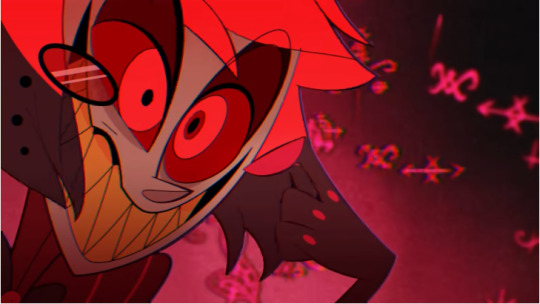
In America and Caribbean, Vodou was first practiced by slaves of African descent. Their religion was dismissed as superstition, their priests as witch doctors and their God and Lwa were denounced as evil. [3]
“They were treated as cattle. As animals to be bought and sold; worth nothing more than a cow. Often less,” anthropologist Ira Lowenthal stated.[7]
“Vodou is the response to that. Vodou says ‘no, I’m not a cow. Cows cannot dance, cows do not sing. Cows cannot become God. Not only am I a human being – I’m considerably more human than you. Watch me create divinity in this world you have given me that is so ugly and so hard. Watch me become God in front of your eyes.’”[7]
During the Haitian Revolution, many of the slaves were Voodooists and some of their military leaders were priests who inspired and organized them to fight for freedom. The imagery and vocabulary of Vodou became threatening to European and American colonies and was then brutally repressed. [3]

(Image from Lisapo Ya Kama)
Years later, Hollywood Voodoo is rooted in racism and acts as an outlet for White anxiety of Black vengeance. One example is the movie, “The Skeleton Key” where Black hoodoo practitioners (who had been lynched) stole the bodies and identities of White people for years.
For Alastor to continue using Hollywood Voodoo themed magic may continue the misinformation of Vodou by inspiring baseless fear and horror.
Voodoo Dolls and Pins

Voodoo dolls are universally associated with Hollywood voodoo and therefore, Vodou. But voodoo dolls are unheard of in the original Haitian Vodou.
In reality, they were inspired from the "poppet" of European witchcraft after an American writer heard Vodou is a witchcraft [8]. This American writer is most likely Victor Hugo Halperin where voodoo dolls first appeared in White Zombie (1932) [9].
Dolls are used in Vodou but only to represent Lwa and Bondye, sometimes the dolls are nailed on graves and altars, in order for the practitioners to communicate with them. The dolls also act as lucky charms and are not used to curse or cause harm with pins. [10], [21]

Cannibalism
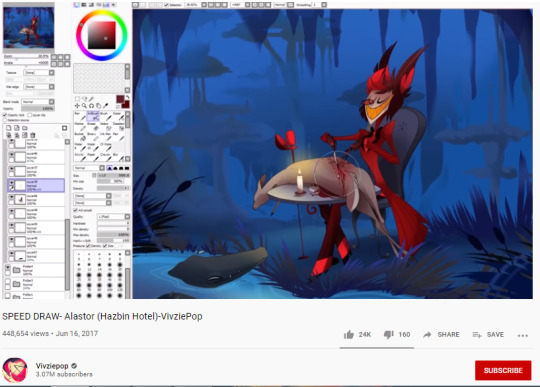
(Screenshot of Alastor the Deer Demon eating a deer)
On February 13, 1864, 4 men and 4 women were executed for abducting, murdering and cannibalizing a 12-year-old girl by Fabre Geffrad, Haiti's reformist president, who wished to make an example out of the 8 killers labelled as vodouists and leave the backwardness of its African past and its folk religion. With Haiti claiming their independence, the Westerns' view on Vodou was proof that the "black republic '' cannot claim to be civilized.[11]
No transcripts of the trial survive. The most detailed account of the crime was written by Sir Spenser St John, the British charge d'affaires in Port-au-Prince -the place nearby the village where the murder happened. It was his account that defined Haiti as a place where ritual murder and cannibalism were common and often goes unpunished.[11]

(An artist’s engraving of the 8 “voodoo” practitioners found guilty of the murder and cannibalism of the 12-year-old Claircine from the Smithsonian Magazine.)
However, there was no other information supporting St. John's claim that cannibalism is a norm for 19th century Haiti. The only two reports of cannibalism provided was from a French priest in 1870s and a white Dominican ten years later. Both have no evidence and both are suspected from their claim that they have penetrated secret ceremonies wearing blackface -if they have been undetected. However, they have influenced Victorian writers who have never visited Haiti.[11]
In the 19th century, American Jesuit missionary, Joseph W. Williams claims that sexual arousal from voodoo "orgies" causes devolution to lower animal states that causes them to cannibalize in an act of sexualized violence.[1]
In Joseph Murphy's psychoanalysis, Imagined Voodoo allows White people to project their most disturbing desires onto a cultural Other.[13]
"The erotic and ecstatic elements in African-derived religions are selected and transformed into images of unrestraint and become vehicles for white sexual and aggressive fantasies... What is ‘dark’ and ‘black’ within the white psyche is projected onto what is ‘dark’ and ‘black’ in the social environment."[13]
Because of the accusations of cannibalism, Vodou is seen as savage. Alastor is hinted to be cannibalistic (as seen by a speed drawing of him, a deer demon, eating a deer).[12] To continue to associate cannibalism with voodoo practice may continue the harm of misinformation.
Vodou Symbols
When Alastor uses magic, Vodou symbols or veves would sometimes appear.
In Vodou, different veves are used depending on the lwa or spirits the practitioners desired to invoke.

(Veve image from Catherine Beyer)
Damballah-Wedo is believed by the Vodou practitioners as the Sky Father and primordial creator of all life. He is depicted as a snake or serpent and is seen as a loving father of the world whose presence brings peace and harmony. [23]

(Veve image from Catherine Beyer)
A part of a veve in the screenshot is from the veve for Papa Legba -the gatekeeper of the spirt world. He is associated with the sun and is seen as a life-giver that transfers the power of Bondye to the living world. Rituals are started by praying to Legba to open the gates so that they can connect to the other lwas. [23]

(Ayizan Voudou Veve copyright 2009 Denise Alvarado, All rights reserved worldwide.)
The veve above is the veve of Ayizan. Ayizan is the lwa of commerce and herbal healing. She is associated with love and Vodou rites of initiation. Ayizan is believed to be the first archetypal mambo (priestess) and the protector of religious ceremonies.[14]
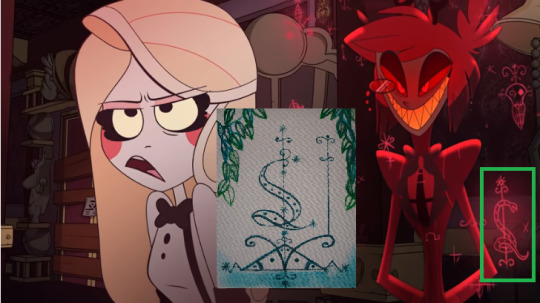
(Veve Image from ErzulieRedEyesArtAndSpirit)
The veve above is taken from the veve of Papa Loko. He is believed to be the first Vodou priest. His name has nothing to do with the American (EDIT: Spanish) slang word "loco" meaning crazy. Papa Loko is a revered knowledgeable spirit who offers spiritual guidance to those seeking formal initiation into Vodou.[15]

Met Kalfou is the master of the Crossroads. He is the crossroads where magic manifests regardless of which lwa is using magic for. He allows it to travel without judgement.[16]
Met Kalfou is often mistaken as some kind of demon or evil. He is believed to be the force through which all magic flows, be it good or ill. Met Kalfou is also the spirit of luck. As a manifestation of crossroads, he can see multiple outcomes of a situation. [16]

Santa Muerte is believed to be the personification of death itself.[17]
Using veves to portray evil when it incorrectly relates to what they symbolize can result in misinformation. Even if only parts of the veve are taken to be used to portray malice, it doesn’t change the fact that they still came from sacred symbols.
Is Alastor a Hoodoo Practitioner?

(Photo: Image of Hoodoo Candles from Wikipedia)
Hoodoo is based heavily on folk magic. It is not a religion. Although their beliefs have elements of African and European religions. Its tradition emphasizes on personal magical power with the intention to improve daily lives. Its a combination of African practices and beliefs and American Indian botanical knowledge and European folklore. It’s heavily practiced in the Southern US.[22]
Unlike Vodou, they have no designated priests or priestesses and no difference between initiates and laity. Hoodoo spells are commonly accompanied with Biblical text but are not performed in Jesus’ name. It uses tools, spells, formulas, methods, techniques. Tools can be herbs, roots, minerals, animal parts and personal possessions.[22]
Alastor MAYBE a hodoo practitioner. But there are possible problems of associating an occult of a minority as a tool of evil. It might be best if Alastor is only depicted using deer-radio-themed dark magic instead.
In Short...
Misrepresentation of Vodou has its roots on White fear of Black retribution as well as White “othering” and projecting of taboo concepts such as fetishization and cannibalism. This results in stigmatization of Black topics and Vodou practitioners. The continuation of Hollywood Voodoo plays a role in perpetuating its misrepresentation. However, informing ourselves may stop the perpetuation in us.
#hazbin hotel#hazbin hotel alastor#hazbin alastor#hollywood voodoo#vodou#voodoo#hollywood racism#lynching tw#racism tw
1K notes
·
View notes